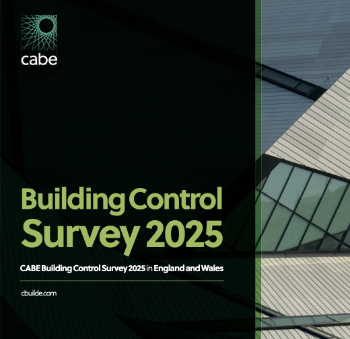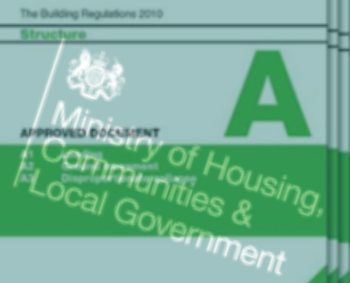Damage caused by construction works
In construction projects based in urban environments there is always the risk of damage being incurred from or to surrounding structures. This is particularly the case when the construction work involves high levels of noise or vibration, deep excavation, demolition, dewatering, and so on.
However, it is often difficult to differentiate between pre-existing damage and damage caused by construction works, since few structures are completely free of defects or signs of distress. Post-construction examination can involve comparing photographs and elevation surveys to resolve issues surrounding possible damage having been caused.
When significant construction work, such as demolition or excavation, is to be undertaken near to other structures, the developer must carry out a condition survey to assess how the work could feasibly affect its immediate surroundings. This survey will also be used to identify and record any deficiencies in the site or property, such as the extent of cracking prior to work beginning.
The recordings from this survey are used as a ‘base line’ for identifying damage caused by the planned works. Developers can establish the liabilities that may be incurred by them, allowing them to consider special provisions or limitations about the undertaking of the work activities.
It is standard practice for builders to have suitable Contractor’s all-risk insurance, a policy that covers all risks normally associated with a construction project. This will apply should a builder cause damage to the site or adjacent property while carrying out works.
Activities such as pile driving or soil compaction cause vibration which can result in damage to surrounding structures. Ground deformations known as Raleigh waves decrease in intensity as they travel from the source, but depending on the soil type or the fragility of the adjacent structure, they may be sufficiently strong to cause damage.
Damage can also be incurred by the settlement of the soils supporting a new foundation not being uniform. Deep excavations near to existing foundations, or changes in groundwater levels due to dewatering processes, can also result in settlement which can cause building cracking and other defects.
To avoid or reduce the risks of vibration damage, it is often the responsibility of the contractor to maintain vibration levels at below damage thresholds established by building departments or technical standards.
If the owner of an adjacent property has concerns about the potential for vibration to cause damage, they, or their solicitor, can write to the contractor and/or developer, making them aware of their liability to repair any damage should any be incurred. A vibration monitor can be installed, at the cost of the developers, to record levels of vibration and assess whether structurally-significant movement is taking place.
In the event that the developers continue with the work without taking steps to limit vibration, it can be possible to threaten or obtain an injunction to prohibit construction works until acceptable actions have been taken.
Complaints about construction sites can also be made to the local authority, the police, or, if they are registered, the Considerate Constructors Scheme. Concerns about health and safety can be referred to the Health and Safety Executive (HSE). For more information, see Complaining about construction sites.
[edit] Find out more
[edit] Related articles on Designing Buildings Wiki
- Best practicable means.
- Code of construction practice.
- Complaining about construction sites.
- Considerate Constructors Scheme.
- Contractor’s all risk insurance.
- Cracking and building movement.
- Environmental impact assessment.
- JCT Clause 6.5.1 Insurance.
- Latent defects.
- Noise nuisance.
- Nuisance in construction.
- Quiet period.
- Reasonable skill and care.
- Settlement.
Featured articles and news
The 5 elements of seiri, seiton, seiso, seiketsu and shitsuke.
Shading for housing, a design guide
A look back at embedding a new culture of shading.
The Architectural Technology Awards
The AT Awards 2025 are open for entries!
ECA Blueprint for Electrification
The 'mosaic of interconnected challenges' and how to deliver the UK’s Transition to Clean Power.
Grenfell Tower Principal Contractor Award notice
Tower repair and maintenance contractor announced as demolition contractor.
Passivhaus social homes benefit from heat pump service
Sixteen new homes designed and built to achieve Passivhaus constructed in Dumfries & Galloway.
CABE Publishes Results of 2025 Building Control Survey
Concern over lack of understanding of how roles have changed since the introduction of the BSA 2022.
British Architectural Sculpture 1851-1951
A rich heritage of decorative and figurative sculpture. Book review.
A programme to tackle the lack of diversity.
Independent Building Control review panel
Five members of the newly established, Grenfell Tower Inquiry recommended, panel appointed.
Welsh Recharging Electrical Skills Charter progresses
ECA progressing on the ‘asks’ of the Recharging Electrical Skills Charter at the Senedd in Wales.
A brief history from 1890s to 2020s.
CIOB and CORBON combine forces
To elevate professional standards in Nigeria’s construction industry.
Amendment to the GB Energy Bill welcomed by ECA
Move prevents nationally-owned energy company from investing in solar panels produced by modern slavery.
Gregor Harvie argues that AI is state-sanctioned theft of IP.
Experimental AI housing target help for councils
Experimental AI could help councils meet housing targets by digitising records.
BSRIA Occupant Wellbeing survey BOW
Occupant satisfaction and wellbeing tool inc. physical environment, indoor facilities, functionality and accessibility.























